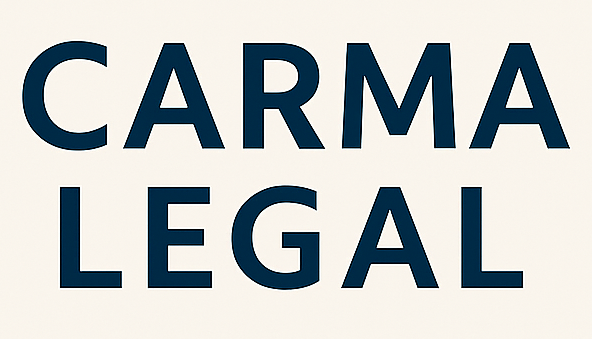Loss of consortium basics
When someone you love suffers a catastrophic injury or wrongful death, you may experience profound losses beyond medical bills and lost income. Loss of consortium describes the deprivation of non-economic benefits of a close relationship. These benefits include companionship, affection, emotional support and physical intimacy. In many states, the law recognizes that your spouse or other family members deserve compensation for these intangible harms.
Historically, loss of consortium claims originated in common law to acknowledge that a severe injury or death of a married person causes significant harm to their spouse [1]. Over time, some jurisdictions have expanded eligibility to include parents, children or other dependent family members. Understanding the basics of these claims helps you see why securing the right counsel is essential.
Handling claim complexities
Pursuing a loss of consortium claim involves navigating complex definitions, varying state rules and strict filing deadlines. Without experienced legal guidance, you risk missing critical requirements that can undermine your case.
Complex legal definitions
Consortium covers both emotional and physical aspects of a relationship. Emotional support includes companionship, comfort and affection. Physical aspects range from household services—such as cooking and cleaning—to sexual relations. Courts look for a demonstrable reduction in these benefits due to the defendant’s negligence.
Varying state rules
Each state sets its own eligibility criteria. In Ohio, for example, victims’ spouses, children and, in some cases, parents may file a claim to recover compensation for the “loss of society,” including physical and emotional intimacy [2]. Other jurisdictions restrict claims to married spouses only, while a few allow domestic partners or adult children to pursue consortium damages.
Limitation periods
Most states impose a statute of limitations for loss of consortium claims. In Ohio, you generally have two years from the date of injury to file your lawsuit [3]. Failing to meet these deadlines usually means losing your right to compensation. An attorney specializing in these claims tracks all critical dates so you focus on recovery and family.
Determining eligible parties
Knowing who can bring a consortium claim is important before you proceed. Eligibility often hinges on your relationship to the injured or deceased person and your state’s statutes.
Spouse eligibility
Spouses are almost universally recognized as eligible claimants. If your partner’s injury prevents you from enjoying companionship, affection or intimacy as before, you have a foundation for a consortium claim.
Parental claims
Some states permit parents to seek filial consortium damages when a child is fatally injured. Generally, eligibility is limited to fatal injuries rather than nonfatal harm. You must show how the loss of your child’s guidance, comfort and care affected your life.
Extended family dependency
Very few jurisdictions allow siblings, grandparents or other relatives to file consortium claims. In unique cases where a family member was wholly dependent on the injured person for emotional or daily-living support, you may have standing. Consulting a specialist helps clarify whether your relationship qualifies.
Estimating intangible damages
Unlike medical expenses or lost wages, loss of consortium claims seek non-economic damages. Quantifying these harms requires careful assessment of how your relationship has changed.
Emotional and physical losses
You may recover for:
- Companionship and affection
- Physical intimacy and sexual relations
- Household services and care
- Shared recreational activities
Non-economic damage factors
Courts consider:
- Length and strength of your relationship
- Age and health of the injured person
- Living arrangements and financial dependency
- Impact on daily routines and emotional well-being
Caps and limitations
Some states cap non-economic damages, while others impose no limits. In Florida, for instance, non-economic claims like loss of consortium face no statutory cap [4]. Knowing your jurisdiction’s rules is crucial for setting realistic expectations.
| Category | Examples |
|---|---|
| Emotional support | Companionship, comfort, affection |
| Physical intimacy | Sexual relations, physical affection |
| Household services | Cooking, cleaning, childcare |
| Shared activities | Family outings, recreational events |
Attorney’s role explained
A loss of consortium claim attorney guides you through each stage of the process, from case evaluation to courtroom representation. Their expertise ensures you meet all legal requirements and maximize your recovery.
Investigating your case
Your attorney collects essential evidence:
- Medical records detailing injuries and prognosis
- Statements from you, other family members and care providers
- Documentation of relationship history and daily routines
They may work alongside a traumatic brain injury attorney or tbi lawyer if your claim arises from a brain injury, ensuring every aspect of harm is documented.
Expert witness coordination
Specialists such as mental health professionals or vocational experts assess how the injury disrupted your life. Their testimony helps quantify emotional distress and changes in household roles.
Negotiation and litigation
Your attorney:
- Presents a clear demand letter to insurers
- Negotiates settlement offers on your behalf
- Prepares your case for trial if negotiations stall
If your loved one’s death resulted from negligence, a wrongful death attorney for families may collaborate to integrate consortium damages into the broader wrongful death claim.
Choosing your attorney
Your choice of legal advocate can make or break your consortium claim. Evaluate candidates based on these criteria.
Relevant experience
Look for lawyers with a track record in catastrophic injury and wrongful death cases. A personal injury lawyer catastrophic injury understands complex evidence and maximum damage strategies.
Communication style
You deserve clear updates and straightforward explanations. An attorney who listens to your concerns and responds promptly reduces stress during an already difficult time.
Fee structures
Most consortium attorneys work on a contingency fee basis, meaning they collect payment only if you win compensation. Confirm how fees and expenses are handled in writing before you sign an agreement.
Filing your lawsuit
Once you’ve chosen counsel, your attorney manages the technical steps to launch your claim.
Document collection
Your attorney organizes:
- Medical and relationship evidence
- Expert reports and witness statements
- Proof of living arrangements and household contributions
Claim submission
They draft and file a complaint or demand letter, ensuring compliance with state rules on form and content.
Court procedures
After filing, your attorney handles:
- Service of process to notify the defendant
- Discovery requests for documents and depositions
- Mediation or settlement conferences
- Trial preparation, including witness examination
Throughout litigation, your attorney maintains a supportive environment, guiding you with empathy and confidence.
Conclusion
A loss of consortium claim involves intricate legal standards, strict deadlines and sensitive evidence. You need a qualified attorney who specializes in these non-economic damages and understands the gravity of your losses. By choosing counsel with experience in catastrophic injury and wrongful death matters, you position yourself for the best possible outcome. Reach out to a dedicated loss of consortium claim attorney today to protect your rights and secure compensation for the emotional and physical impact on your life.








